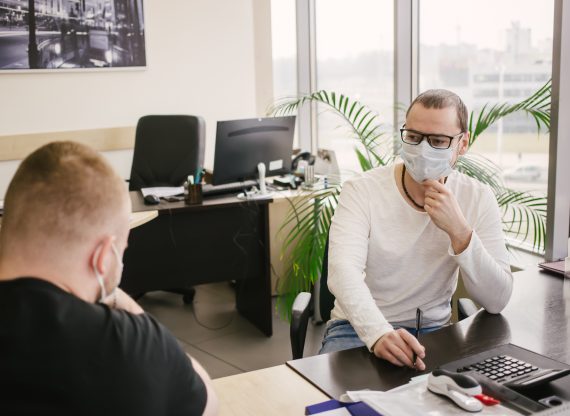COVID-19: Nine measures to keep workers safer at work

Voluntary measures put in place by private employers are potentially powerful tool that, if successfully applied, can diminish the excuse or necessity (?) for heavy handed and coercive government interventions. Here are some examples:
- Companies can continue to encourage telework, and use collaborating platforms even on the job site. Not all office meetings need to happen in person or in the same physical space. Businesses should limit gatherings to a modest size, perhaps five people safely distanced from one another.
- Reduce the risks of commuting, by limiting use of mass transit systems and instead encouraging carpooling or use of corporate vans, where hygiene and social distancing are easier to achieve.
- Employers can reduce density through different measures, for instance split workers into groups and alternate remote work and office attendance, or through staggered schedules to avoid rush hour crowds.
- Regarding meals, companies should encourage workers to bring food to their location or have it delivered in prepackaged containers. Employers’ cafeterias can continue providing services with added measures for safety: more supervision of the health of food handlers, for example.
- Surfaces should be disinfected regularly. Provide disinfecting wipes to all employees and ask them to clean surfaces they often touch, such as keyboards and telephones, regularly. Allow employees to wear masks if they wish, have hand sanitizer dispensers and promote hand washing.
- Travel should be discouraged, but if absolutely essential consult national travel advisories before any business trip. Companies should make sure virus levels are low in both the home city and the destination.
- Communicate frequently with employees, in particular if there are changes in protocols. This can be done electronically via video or email rather than face to face. Consider designating a company point person whom employees can contact when they have Covid-19 concerns.
- Follow and communicate local government rules, specific for each context and with a focus on pregnant workers, older workers, immunocompromised workers and workers with chronic diseases.
- Support access to rapid diagnostic testing if an employee becomes ill. Testing can be brought to work to facilitate screening for those who might have mild symptoms or for those who think they were exposed. Make sure a positive diagnosis doesn’t become punitive: Maintain pay when someone agrees to self-isolate or stays home while awaiting a test result.
References
Getting your workplace ready for COVID-19, World Health Organization, March 3, 2020.
Scott Gottlieb and Stephen Ostroff, “How to Keep Workers Healthy on the Job,” The Wall Street Journal, April 19, 2020.
COVID-19 : Mesures de prévention et de soutien aux employés, Institut national de santé publique du Québec, March 25, 2020.

